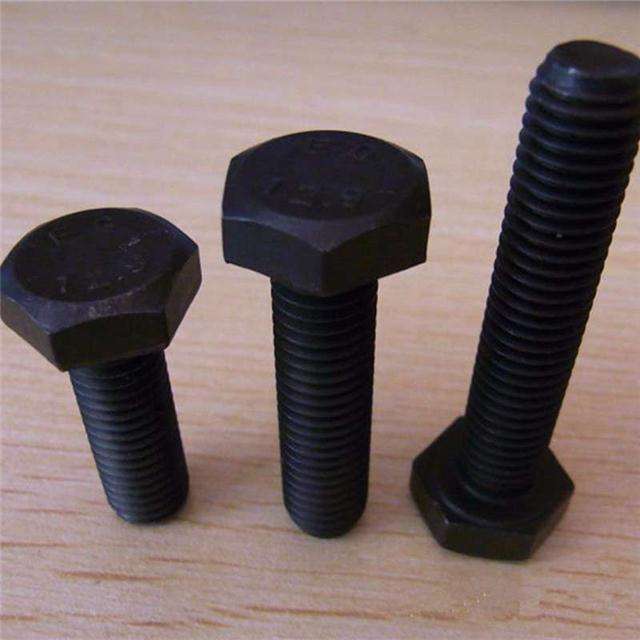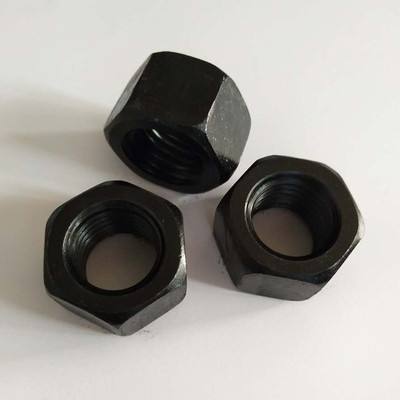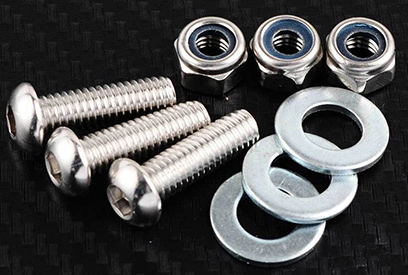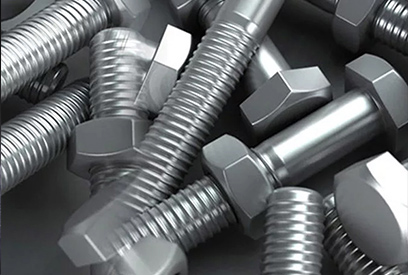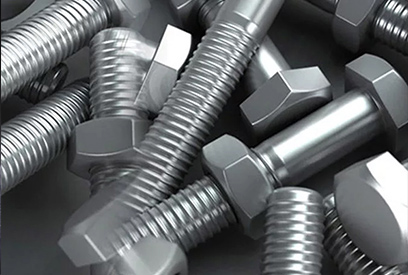Heavy Hex Bolt Factory introduces which parts of non-standard fasteners:
1. Bolt: a type of fastener consisting of two parts, a head and a screw, which need to be matched with a nut to fasten and connect two parts through holes. This type of connection is called bolt connection. If the nut is unscrewed from the bolt, the two parts can be separated, so the bolt connection is a detachable connection.
2. Stud: There is no head, only a type of fastener with threads on both ends. When connecting, one end of it must be screwed into the part with an internally threaded hole, the other end must pass through the part with a through-hole, and then the nut is screwed on, even if the two parts are tightly connected as a whole. This type of connection is called a stud connection, which is also a detachable connection. It is mainly used where one of the connected parts has a large thickness, requires a compact structure, or is not suitable for bolt connection due to frequent disassembly.
3. Screw: It is also a type of fastener composed of two parts: the head and the screw. According to the purpose, it can be divided into three categories: machine screws, set screws, and special purpose screws. The machine screw is mainly used for the fastening connection between a part with a tightly threaded hole and apart with a through-hole, without the need of a nut. Set screws are mainly used to fix the relative position between two parts. Special purpose screws such as eyebolts are used for lifting parts.
4. Nut: with an internally threaded hole, the shape is a generally flat hexagonal column, there are also flat square columns or flat cylinders, with bolts, studs, or machine screws, used to fasten the connection of two parts, so that It becomes a whole.
5. Self-tapping screws: similar to machine screws, but the thread on the screw is a special self-tapping screw thread. It is used to fasten and connect two thin metal components into one piece. Small holes need to be made in the component in advance. Because this kind of screw has high hardness, it can be directly screwed into the hole of the component. Form a responsive internal thread. This type of connection is also a detachable connection.
6. Wood screw: It is also similar to the machine screw, but the thread on the screw is a special wood screw with ribs, which can be directly screwed into the wooden component to fasten a metal part with a through-hole and a wooden component. together. This connection is also a detachable connection.
7. Washer: A type of fastener with an oblate ring shape. It is placed between the supporting surface of bolts, screws, or nuts and the surface of the connected parts, which increases the contact surface area of the connected parts, reduces the pressure per unit area, and protects the surface of the connected parts from damage; another type of elastic washer, It can also prevent the nut from loosening.
8. Retaining ring: It is installed in the shaft groove or hole groove of the machine and equipment, and plays a role in preventing the parts on the shaft or hole from moving left and right.
9. Pin: Mainly used for parts positioning, and some can also be used for connecting parts, fixing parts, transmitting power, or locking other fasteners.
10. Rivet: A type of fastener composed of two parts, ahead, and a nail rod, used to fasten and connect two parts through holes to make them into a whole. This type of connection is called rivet connection or riveting for short. Belong to and non-detachable connection. Because to separate the two parts connected together, the rivets on the parts must be broken.
11. Assemblies and connection pairs: Assemblies refer to a type of fasteners supplied in combination, such as a combination of machine screws and flat washers; connection pairs refer to a combination of special bolts, nuts, and washers. Fasteners, such as steel structures, are connected by high-strength large hexagon head bolts.
12. Welding nails: Because of the heterogeneous fasteners composed of light energy and nail heads, they are fixedly connected to a part by welding so as to be connected with other parts.



